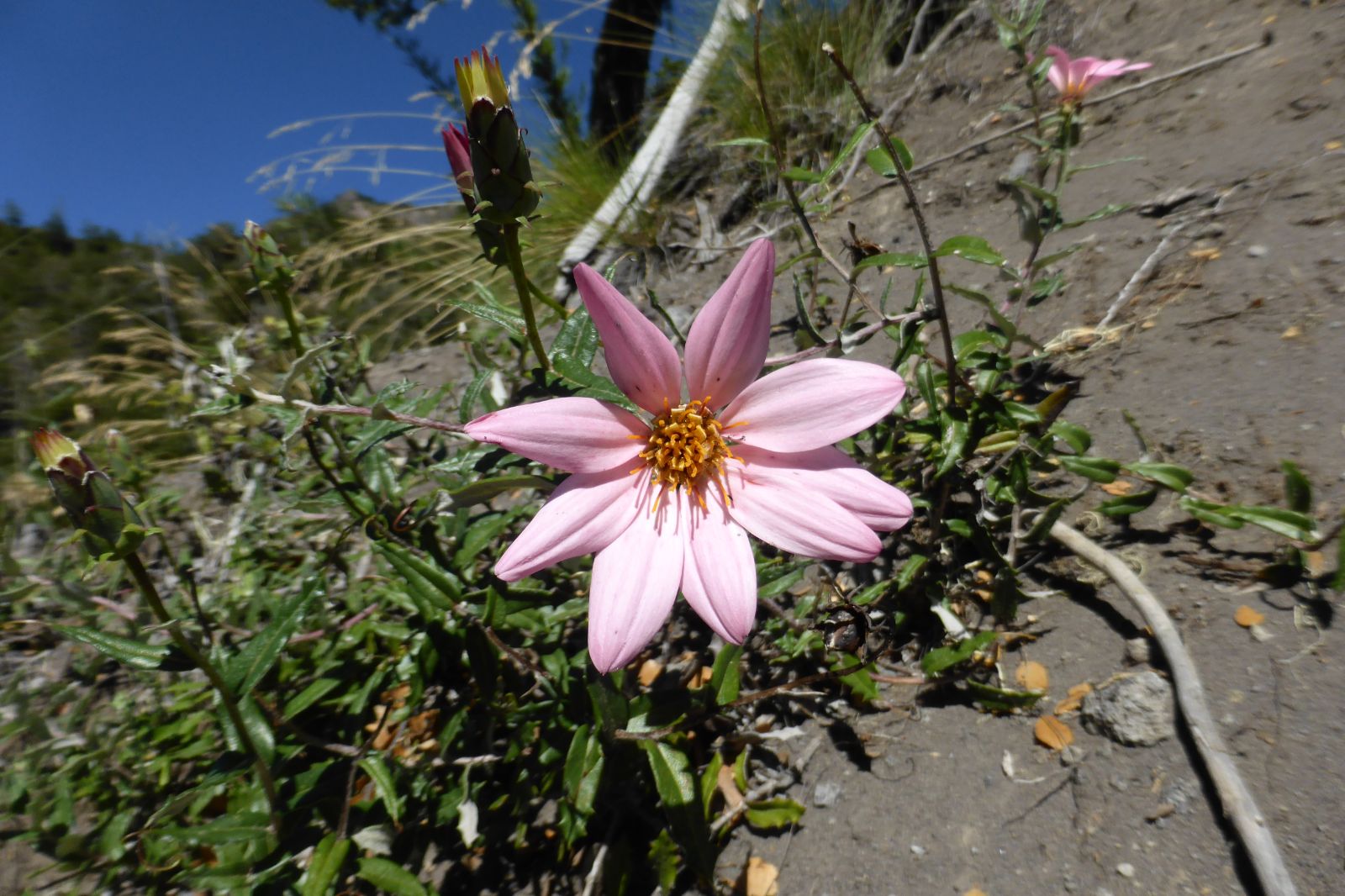Mutisia spinosa
Credits
Article from Bean's Trees and Shrubs Hardy in the British Isles
Recommended citation
'Mutisia spinosa' from the website Trees and Shrubs Online (treesandshrubsonline.
Genus
Synonyms
- M. retusa var. glaberrima Phil.
Infraspecifics
An evergreen climber whose height is given by collectors as 10 to 20 ft. Leaves 1 to 21⁄4 in. long, half as much wide, stalkless, elliptical or oblong, lobed at the base, notched at the apex, the margins varying from entire to coarsely and triangularly toothed down the whole length, but often with the dentation confined to one or two teeth near the apex, dark green and glabrous above, varying from glabrous to loosely woolly beneath; the midrib extended into a tendril up to 3 in. long. Flower-heads borne on stalks up to 3 in. long: ray-florets about eight, pink, oblanceolate, 11⁄4 in. long, 1⁄4 to 1⁄2 in. wide.
Native of Chile and Argentina. It was collected by Richard Pearce for Veitch’s in 1868 and flowered at Kew in 1894. The plants at present in cultivation were introduced by H. F. Comber during his Andean expedition, 1925–7. It succeeds well scrambling through some large shrub in a sunny position, and that is really the best place for it, since the ugly dead leaves of the older stems will then be mostly concealed. It has produced self-sown seedlings at Nymans in Sussex.
This species, as the late Clarence Elliott observed, is not very distinct from M. ilicifolia from a gardener’s point of view, but the flower-head in M. ilicifolia is very shortly stalked as a rule, sometimes almost sessile, and the leaves are harder, more uniformly coarsely toothed and more distinctly net-veined. Mr Elliott considered, from what he saw of the two species in Chile, that M. ilicifolia had superior flowers, but M. spinosa might be more amenable to cultivation.
There is a variant with white ray-florets, of which Comber sent seeds under his No. 1105.
var. pulchella (Spegazzini) Cabrera
Synonyms
M. retusa Remy

